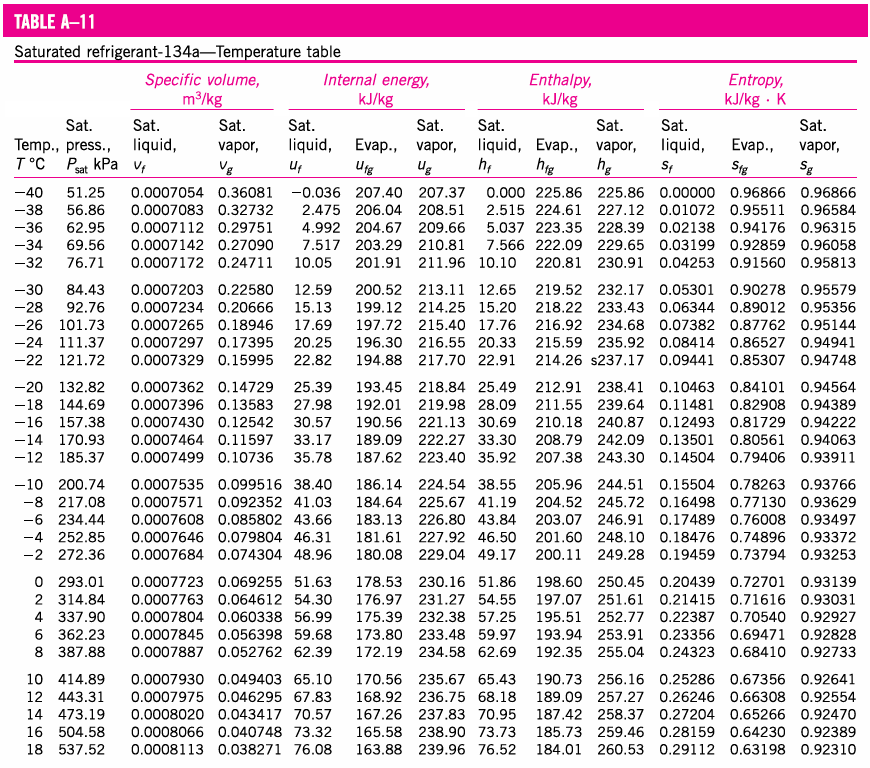

What that means is that a warm cup of coffee placed on a kitchen table does not become hotter while the room grows colder. Among other things, the second law describes process direction. Using these simplifications and definitions, the energy equation for steady state operation in a turbine reduces to: Equation 2:īut this represents the ideal scenario and here is where the second law steps in. These values may be found in the standard ASME steam tables, where saturated water at 0 C has been designated as having zero enthalpy. Enthalpies have been calculated for a wide range of steam and saturated liquid conditions. Enthalpy is a measure of the available energy of the fluid. Scientists have combined these two terms into the very useful property known as enthalpy (h).
#Steam tables thermodynamics calculator plus#
Removing these terms leaves the internal energy of the fluid (u) plus its flow work (PÏ…) capabilities. Second, in a steady flow process such as in a steam generator, the system does not accumulate energy, so dE c.v./dt = 0. First, in many systems (especially steam generators) potential and kinetic energies are very minor compared to other energy changes and can be overlooked. While this equation appears complicated, it is easily understood through a few definitions and simplifications. S = Shaft work such as that done by a turbine per unit time mĢ = Mass flow out of the system per unit time mġ = Mass flow into the system per unit time (VĢ = Internal energy of the exiting fluid uġ = Internal energy of the entering fluid PĢ = Flow work of fluid as it exits the system (P = pressure, Ï… = specific volume) Pġ = Flow work of fluid as it enters the system dEĬ.V./dt = Change in energy within the system per unit time In this equation, Q = Heat input per unit time W The classic energy equation for a simple system (defined as a control volume in textbooks) is: Equation 1:

It says that energy used within a system is neither created nor destroyed but only transferred. In reality, the first law is that of conservation of energy. To begin, thermodynamics is built around two laws, sometimes jokingly described thusly…įirst Law: You can’t get something for nothing

Yet relatively simple thermodynamic formulas explain much about the fundamentals of steam generation. It’s therefore worthwhile to address a few fundamentals of steam production.įor many people, even some with technical backgrounds, the word “thermodynamics” conjures up visions of complex mathematics. One such area is steam generating efficiency. Everyone knows baby boomers in the power sector have reached retirement age, meaning many new hires will be thrust into technical positions where fundamental information is valuable.


 0 kommentar(er)
0 kommentar(er)
